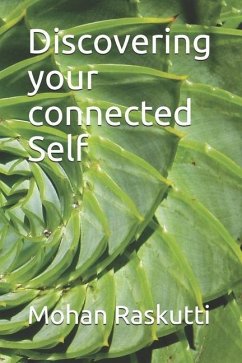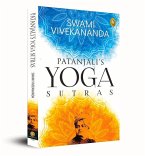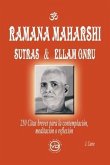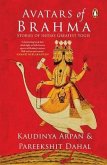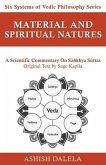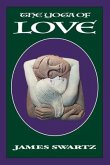'Discovering your connected Self' is Part 1 of the 'Reflection Series'. It is a contemporary philosophical exploration of the Brahma Sutras with a view to reflect on and understand its principles in a modern context. This book is based on Chapter 1 (titled Samanvayadhya) of the Brahma Sutras. Subsequent chapters will follow this text as separate individual texts forming Reflection series parts 2 to 4.The aspiration of this English interpretation of the Brahma Sutras is to share the philosophical heights and profound depths of knowledge contained in each main heading (Adhikaranam) and the aphorisms (Sutras) within. Each of the eight sections in this text aligns with a number of main topics or headings (Adhikaranams) of Chapter 1 of the Brahma Sutras.Section 1 in this text outlines the human condition and the circumstances that the reader (as a manifested being in Nature) finds themself in - as a perplexed yearner seeking answers to their existence in Nature. It also highlights the attributes of such a yearner that qualifies them to seek out what may lie beyond their current state of manifested being.Section 2 provides a response to the yearner by focusing on Nature's essence of transience and plurality. It follows this on by suggesting that a wholesome response offered by the Brahma Sutras is what Nature is 'not' i.e. non-transient and non-plural. The concept of Self or Brahman is introduced as a wholesome response.Section 3 follows on from section 2 in pointing out that the principle of Brahman lies beyond what the yearner can comprehend because of the yearner's current state as a manifested being in Nature and beholden to what means and tools (like the senses, mind and intellect) Nature offers. The only way to transcend the limitations, this section suggests, is deep reflection and meditation aided by the Vedantic texts (Brahma Sutras, Upanishads and the Bhagavad Gita).Section 4 points out that the consistent focus of Vedantic texts is the Self (Brahman). The reader of these texts has to bear this in mind at all times when studying and interpreting these texts.Section 5 reasons that continuity in Nature's transience and plurality is provided by the anchored presence of Brahman or Self as non-transient, sentient singularity.Section 6 discusses the pervasiveness of the non-transient, sentient singularity of Self (Brahman) in all manifested beings in Nature; indeed, in Nature itself. It also introduces the concept of Manomaya as that aspect of Self (Brahman) that drives the manifested being's mind, thoughts and actions to manifest all that exists in Nature. Section 7 elaborates on the Self (Brahman) as non-transient, sentient singularity that pervades Nature and what lies beyond Nature itself; thereby qualifying as being its source or origin. Having started from the human condition of the yearner in section 1 and developing a response to the yearning, the first seven sections detail some of the key concepts or principles of the Brahma Sutras. Section 8 wraps up this text by providing a potential pathway for the yearner from the discovery of the concepts through to reflection, realization and eventual transcendence to the Self or Brahman.Numerous quotes from various Vedanta texts (Upanishads and Brahma Sutras) are referred to throughout this text. Each quote is attributed to the specific source next to each quote. Each quote itself is not a literal translation from Sanskrit to English. It is modified and interpreted by the author without losing the essence or intent of the original Sanskrit quote.Reiteration and repetition are striking features of the Brahma Sutras. This is so as to enable focused understanding and internalization of the principles and philosophy outlined in it.
Hinweis: Dieser Artikel kann nur an eine deutsche Lieferadresse ausgeliefert werden.
Hinweis: Dieser Artikel kann nur an eine deutsche Lieferadresse ausgeliefert werden.

